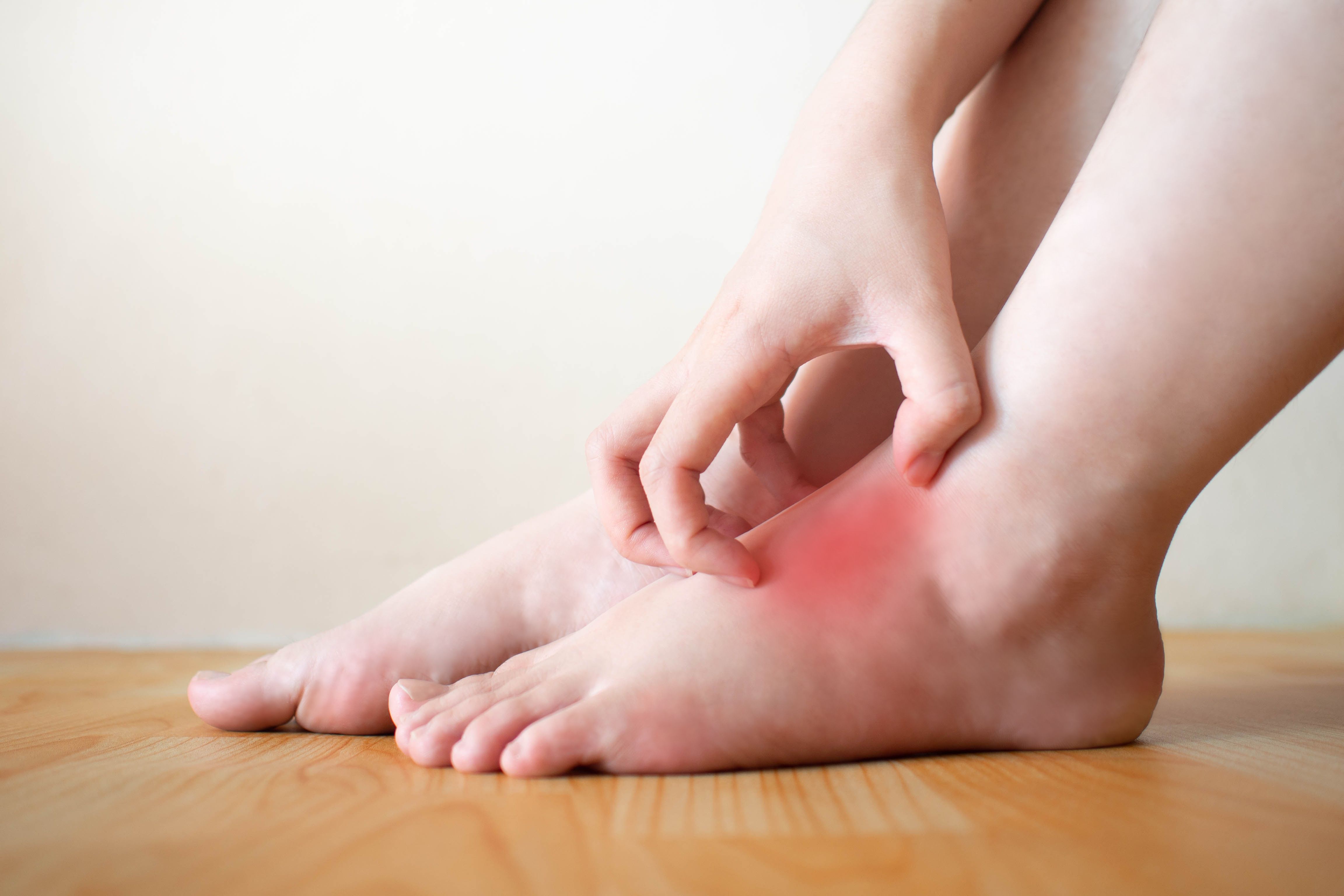Dupilumab effective for atopic hand and foot dermatitis
In a phase 3 clinical trial, dupilumab met both its primary and key secondary endpoints, demonstrating efficacy as a potential treatment for atopic hand and foot dermatitis.
Young woman scratching foot | Image Credit: © Orawan - © Orawan - stock.adobe.com.

Dupilumab (Dupixent; Sanofi and Regeneron) demonstrated positive results in a phase 3 clinical trial evaluating its efficacy in adults and adolescents with moderate to severe atopic hand and foot dermatitis, according to a press release from Regeneron Pharmaceuticals, Inc.
Dupilumab is a fully human monoclonal antibody (mAb) that inhibits the signaling of the interleukin-4 (IL-4) and IL-13 pathways and is not an immunosuppressant.
The phase 3 double-blind, placebo-controlled trial evaluated the efficacy and safety of dupilumab in 133 adolescents and adults with moderate to severe atopic hand and foot dermatitis that had inadequate response or intolerance to topical corticosteroids. Patients with hand and foot disease predominantly driven by irritant or allergic contact dermatitis were excluded from the trial.
The primary endpoint evaluated the proportion of patients with clear (0) or almost clear (1) skin of hand and feet eczema after 16 weeks of use according to the Investigator Global Assessment scale. The proportion of patients with improvement in itching on hands and feet from baseline to 16 weeks was the key secondary endpoint (measured by a 4-point or greater reduction in the Peak-Pruritis Numeric Rating Scale [PP-NRS] on a 0 to 10 scale).
Patients in the trial received dupilumab (n = 67) every 2 weeks (adults 300 mg, adolescents 200 mg, or 300 mg based on body weight) or placebo (n = 66). Of the patients treated with dupilumab at 16 weeks, 40% achieved clear or almost clear skin on hands and feet compared to 17% with placebo (P ≤ 0.01), the primary endpoint.
Also at 16 weeks, 52% of dupilumab patients saw a clinically meaningful reduction in itch on hands and feet compared to 14% with placebo (P < 0.0001), the key secondary endpoint. Patients treated with dupilumab saw a 70% average improvement from baseline compared to 40% with placebo (P < 0.0001)in hand eczema disease severity.
Data from the study also showed improvements in other secondary endpoints including measures of hand and foot skin pain, sleep, and quality of life related to hand eczema. Skin pain reduction was assessed by the change from baseline in weekly average of daily hand and foot peak pain 0 to 10 NRS. Sleep improvement was assessed from baseline in weekly average of daily sleep NRS (0 to 10 scale.) Health-related quality of life was assessed by change from baseline in the Quality of Life in Hand Eczema Questionnaire (QoLHEQ), measured by a 0 to 117 scale.
Rates of adverse events (AEs) were 66% for dupilumab and 74% for placebo. More common AEs observed with dupilumab (≥5%) compared to placebo included: nasopharyngitis (16% dupilumab vs 11% placebo), upper respiratory tract infection (9% dupilumab vs 5% placebo), conjunctivitis (6% dupilumabvs 2% placebo), herpes viral infections (6% dupilumab vs 3% placebo) and increased blood creatine phosphokinase (6% dupilumab vs 0% placebo), according to the study safety data. Of the patients taking dupilumab, 3% used at least 1 rescue medication compared to 21% of patients on placebo.
Currently, dupilumab is approved as a prescription medicine to treat adults and children aged 6 months and older with moderate to severe atopic dermatitis (AD) that is not well controlled with prescription topical therapies, or to treat those who cannot use topical therapies. It is not known if dupilumab is safe in children with AD aged 6 months and under.
Dupilumab is also used with other asthma medicines for maintenance treatment of moderate to severe eosinophilic or oral steroid dependent asthma in adults and children aged 6 years or older with asthma not controlled by current asthma medications. It is not known if dupilumab is safe and effective in children with asthma aged under 6 years.
Dupilumab is prescribed for eosinophilic esophagitis (EoE) in adults and children aged 12 years and older that weigh at least 88 pounds, though it is not known if dupilumab is safe and effective in children aged under 12 years with EoE.
Reference
Dupixent (dupilumab) late-breaking data at AAD show significant improvements in signs and symptoms of moderate-to-severe atopic hand and foot dermatitis. Regeneron. March 18, 2023. Accessed March 21, 2023. https://investor.regeneron.com/news-releases/news-release-details/dupixentr-dupilumab-late-breaking-data-aad-show-significant
Recognize & Refer: Hemangiomas in pediatrics
July 17th 2019Contemporary Pediatrics sits down exclusively with Sheila Fallon Friedlander, MD, a professor dermatology and pediatrics, to discuss the one key condition for which she believes community pediatricians should be especially aware-hemangiomas.